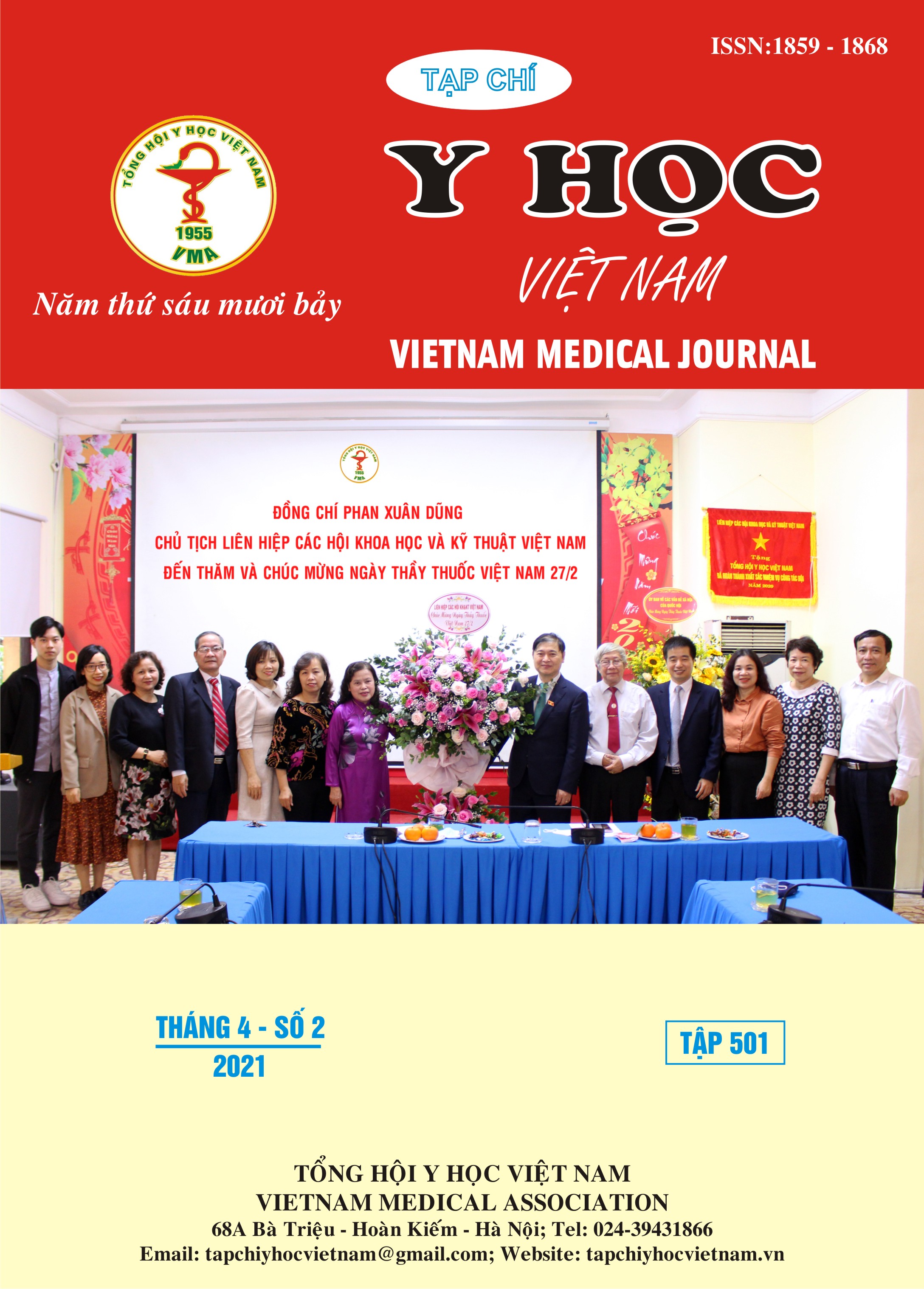THIẾT LẬP BẢNG ĐIỂM DỰA VÀO SIÊU ÂM ĐỂ TIÊN ĐOÁN SỐT XUẤT HUYẾT DENGUE CÓ SỐC Ở TRẺ EM
Nội dung chính của bài viết
Tóm tắt
Đặt vấn đề: Siêu âm là phương tiện đơn giản giúp phát hiện dịch ổ bụng và màng phổi ở bệnh nhân bị Sốt xuyết huyết dengue (SXHD). Mục tiêu: thiết lập bảng điểm dựa vào siêu âm đề tiên đoán SXHD có sốc Đối tượng và phương pháp: Đối tượng gồm 446 bệnh nhi SXHD có siêu âm, từ 1-14 tuổi, được truy cứu từ bệnh án lưu trữ tại bệnh viện An Giang. Dùng mô hình hồi qui logistic đa biến để xác định các biến có khả năng tiên đoán sốc. Kết quả: Có tất cả 446 bệnh nhân (154 có sốc và 292 không sốc) được siêu âm trong giai đoạn tiền sốc. Tỉ lệ có tụ dịch ở 6 vị trí (túi Morison, túi cùng Douglas, dịch dưới bao gan, dịch tự do ổ bụng, dịch màng phổi phải và trái) và dày thành túi mật (TTM) ở nhóm sốc cao hơn nhóm không sốc. Bảng điểm tiên đoán sốc SXH dựa vào siêu âm như sau:
Vị trí
Điểm
Dày TTM > 5 mm
Không
Có
0
1
Túi Morison
Không
Có
0
1
Túi cùng Douglas
Không
Có
0
2
Dịch dươi bao gan
Không
Có
0
3
Dịch tự do ổ bụng
Không
Có
0
3
Dịch màng phổi phải
Không
Có
0
1
Dịch màng phổi trái
Không
Có
0
1
Tổng điểm:
12
Ở điểm cắt >5 điểm, giá trị để tiên đoán sốc SHXD có độ nhạy là 79,8% và độ đặc hiệu là 82,7%. Kết luận: Siêu âm là một phương tiện không xâm lấn và có thể thực hiện tại giường bệnh để khảo sát nhanh dịch ổ bụng và màng phổi trong SXHD. Bảng điểm dựa vào siêu âm dịch ổ bụng có giá trị trong tiên đoán SXHD có sốc.
Chi tiết bài viết
Từ khóa
Sốt xuất huyết dengue, siêu âm, bảng điểm siêu âm
Tài liệu tham khảo
2. Hung TM, Clapham HE, Bettis AA, et al. (2018) The Estimates of the Health and Economic Burden of Dengue in Vietnam. Trends Parasitol. 34(10): 904-918.
3. Hahn DD, Offerman SR, Holmes JF. (2002) Clinical importance of intraperitoneal fluid in patients with blunt intra-abdominal injury. Am J Emerg Med. 20(7):595-600.
4. McKenney MG, Martin L, Lentz K, et al. (1996) 1000 consecutive ultrasounds for blunt abdominal trauma. J Trauma. 40:607-612.
5. Pramuljo HS, Harun SR. (1991) Ultrasound findings in dengue haemorrhagic fever. Pediatr Radiol; 21:100-102.
6. Setiawan MW. Early diagnosis of atypical Dengue hemorrhagic fever. ltrasound international. 1995;1:135–140.
7. Setiawan MW, Samsi TK, Wulur H, et al. (1998) Dengue haemorrhagic fever: ultrasound as an aid to predict the severity of the disease. Pediatr Radiol; 28:1-4
8. Nimmannitya S. (1987). Clinical spectrum and management of dengue haemorrhagic fever. Southeast Asian J Trop Med Public Health.18(3):392-7.


